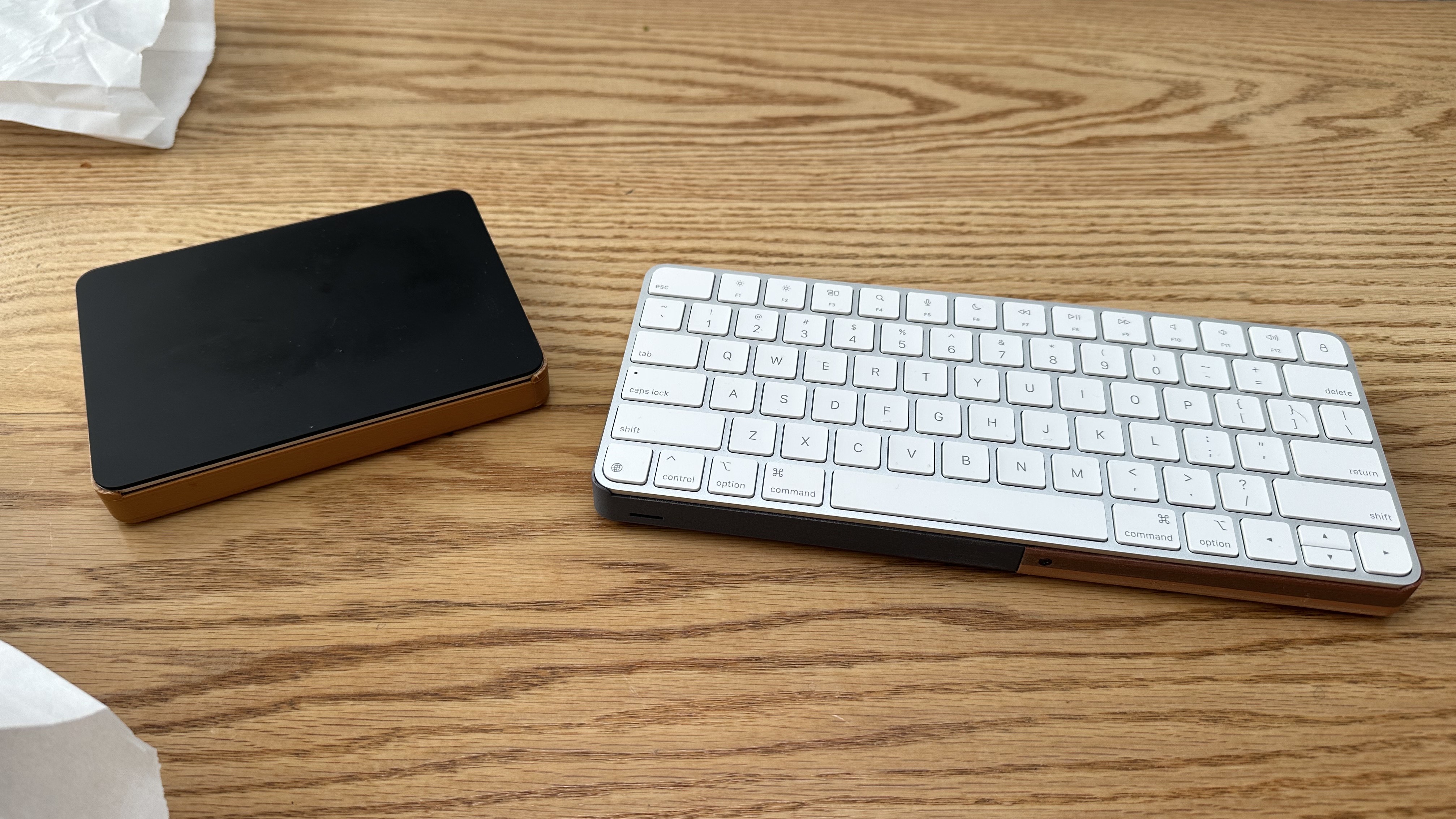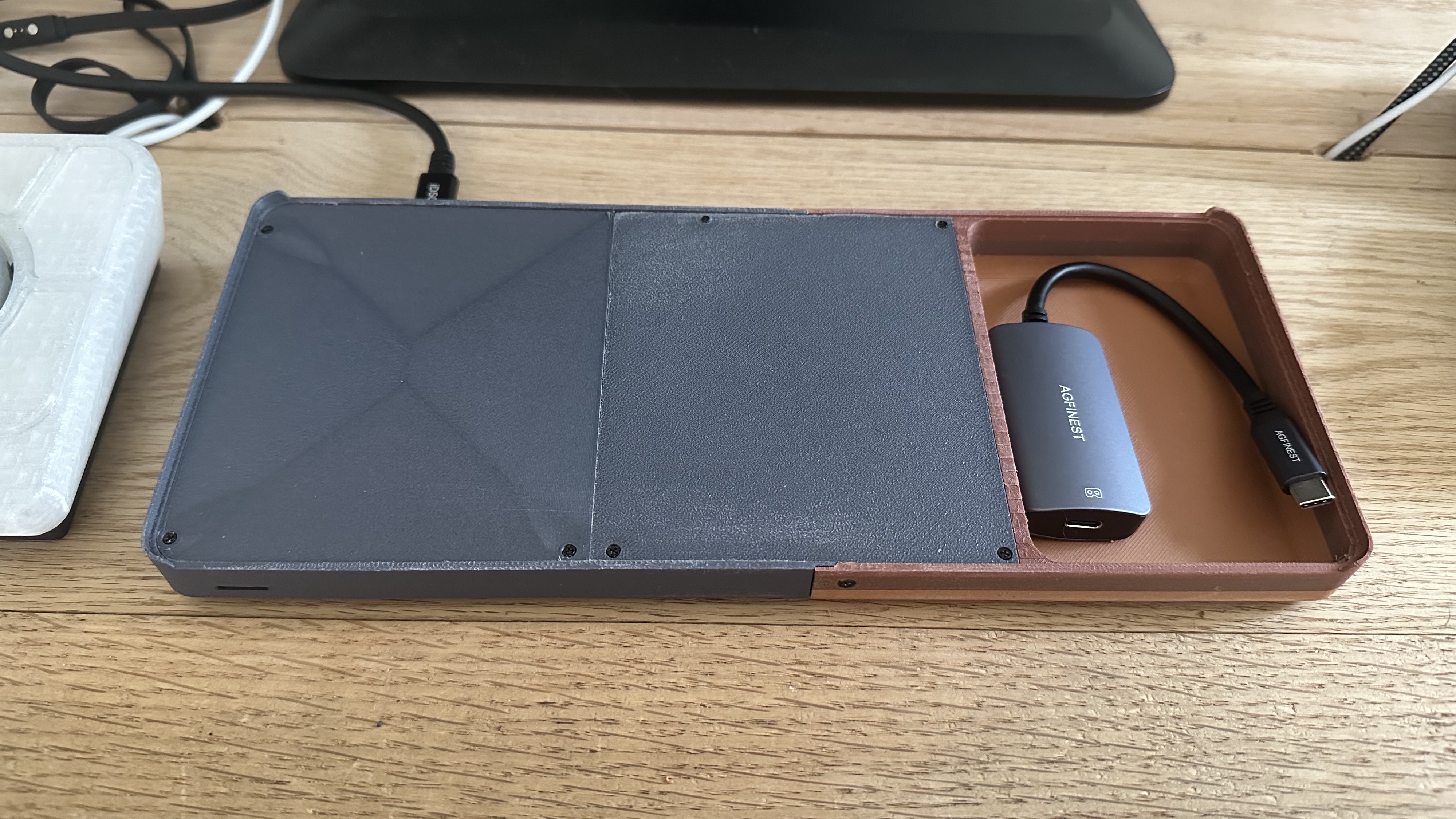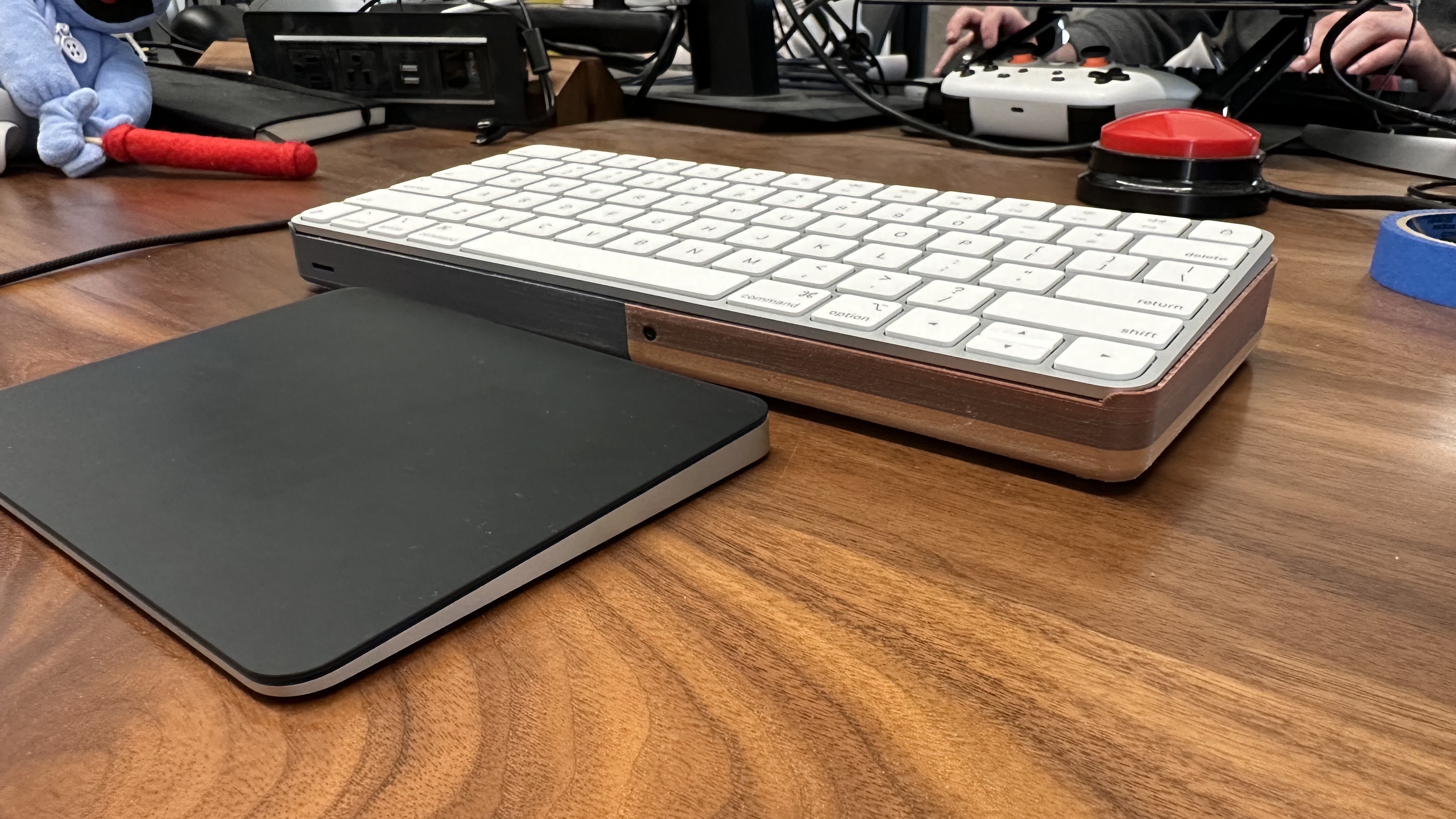The land of proper DIY hardware is one that both fascinates and terrifies me in equal measure—such incredible projects, and such terrible abandon. You wouldn’t, for instance, catch me tearing the guts out of one of the beloved Legion Go S handhelds sitting in front of me. But I’m not one of those DIY-ers, and perhaps my vision isn’t grand enough. It’s certainly not as grand as michaelthatsit‘s vision of a Steam Deck inside a keyboard, a project that he’s now made open to all.
I first spotted this project on Reddit, where the first working version was introduced by Michael as “Bento”, and it was explained that “this whole project has been a game of constraint optimisation.” Essentially, the DIY-er has freed Steam Deck from its screen and grips and given its hardware a new home in a bespoke chassis under a keyboard. On the right-hand side is a portioned off storage section, thus the Bento name.
Introducing Bento, a steam deck in a keyboard. from r/SteamDeckModded
I spoke to Michael, primarily to see what inspired the project and how he went about making it, as well as whether any of it will be made open to others. And to cover the answer that some of you with Steam Decks will be most interested in: Yes, the ‘lunchbox-computer’ Bento project plans have been released for 3D printing at home. You can find the repo files on Github, and these contain “all the STEP, 3MF, and STL files for Bento, as well as a few peripherals like a Magic Trackpad tray.”
What surprised me the most, though, was the inspiration for this project, which is XR (extended reality). As michaelthatsit explains:
“This is meant to be my take on a ‘spatial computer.’ The idea had been nagging at me for a bit. I’ve been working in XR for nearly a decade now. I was an engineer on the Vision Pro, and I’ve been trying to do my own XR software startup since I left in 2023. In that time, it’s become clear to me that the killer app for XR is simply ‘big virtual screen.’ You don’t need all the extra 3D stuff because simply put, no one wants it.”
Spatial computing in XR is, essentially, interacting with a computer in mixed virtual space. For instance, it could be interacting with a virtual screen that your XR glasses display in your real-world environment.
Michael continues: “The only company that seems to understand [that you don’t need all the extra 3D stuff] is XReal, opting to build a “spatial display” that plugs into your existing computer. My only issue with XReal and others is that they’re redundant. My Steam Deck, Mac, etc, already have a display. So this is really where the inspiration for bento came from. I wanted a computer designed to lean into this form factor, eliminating the extra display and shrinking everything down to fit underneath the most necessary feature for any computer, the keyboard.”
So, he got to work in Shapr3D and was then printed on his BamuLabs A1 Mini 3D printer. That this was achieved with a mini 3D printer is also of note. It’s this constraint that Michael says led to the split-body design, and of course a happy side effect of this is that others with only mini 3D printers should get by printing from the repo files just fine.
The one hill I will die on: the killer use case for XR has and will always be “big virtual screen.” And we’ve spent billions because surely it has to be something more interesting than that.June 17, 2025
Bento has undergone some revisions already. For instance, in rev 2, the addition of an angled design for airflow and ergonomics, fencing to keep the keyboard in place, space to flip the keyboard over to keep it safe while travelling, and a wood finish.
I asked about the airflow and temperature, and apparently that’s fine, too, especially since the rev 2’s new angled design:
“In the first rev things were a little tight but I hadn’t noticed any thermal issues. The airflow was as good as the Steam Deck. Possibly a little better given there are a lot fewer components packed into bento. That said, rev 2 has a wedge design, improving ergonomics and adding more space for airflow.”
The files seem ready to download as-is, but Michael’s keen to note that further revisions, improvements, and additions are still in the works: “I see an opportunity here for a much larger project, so I really wanna do it justice.” That’s an opportunity open to others, too.
The GitHub page mentions requests for contributions for a number of things, including support for other keyboards than the Apple Magic Keyboard Bento is designed for. In addition to Raspberry Pi 5 and Framework variants, there’s also mention of peripheral designs that could fit perfectly into the Bento compartment.
For the latest updates on Bento (as well as other projects) you can keep an eye on the creator’s X account.



